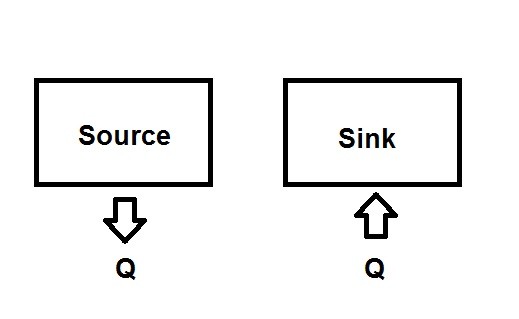In order to develop the 2nd law of thermodynamics it is helpful to use a hypothetical body that has a large thermal energy capacity. In turn, this will give us a thermal energy reservoir. A thermal energy reservoir has the ability provide or absorb finite amounts of heat without undergoing a change in temperature.
What is a Thermal Energy Reservoir?
In reality there are certain large bodies that are thermal reservoirs. Examples of such bodies are the ocean, a lake, or a river. Atmospheric air is also a thermal reservoir. These bodies have an extremely large thermal mass. As a result, to change their temperature a large amount of energy is required. This is why they are considered thermal energy reservoirs.
An object that has its temperature carefully controlled can also be a reservoir. For example most furnaces have their temperature controlled. They are also capable of providing large amounts of thermal energy. As a result, they act as a thermal energy reservoir.
Finally, a body doesn’t necessarily have to be large to be considered a reservoir. Depending on how large the energy transfer is, any body can potentially be considered a reservoir. For example, the air in a room can be considered a thermal reservoir in certain cases. One of these cases is the energy dissipating from a laptop. Generally this energy isn’t large enough to have considerable effect on the air temperature in a room. In turn, the air in the room is acting as a thermal energy reservoir.
Thermal Energy Source and Sink
There are two types of thermal energy reservoirs. A reservoir that supplies energy in the form of heat is called a source. On the other hand, a reservoir that absorbs energy in the form of heat is called a sink.

Effects on the Environment
When engineers are designing a system that will remove heat into the environment they have to consider the effects. For example if waste energy is not properly handled, than the temperatures of portions of the environment could significantly increase. This is known as thermal pollution. Thermal pollution can seriously disrupt marine life in rivers and lakes. On the other hand, if waste energy is properly controlled, it can actually improve quality of marine life. This is done by keeping the local temperature increase within a safe but desirable level.